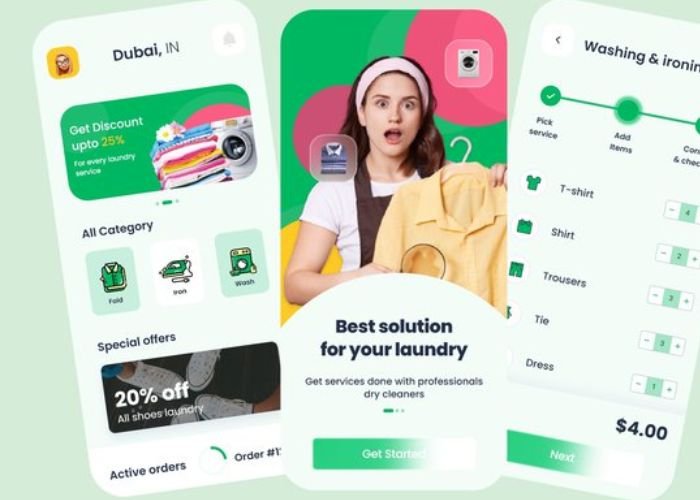Businesses in the ever-evolving IT and fashion industries rely increasingly on mobile apps to keep customers connected. Because cellphones are so common, fashionistas can now access any and all fashion content. There are a lot of style applications out there, which makes it trying to isolate yourself and draw in the right kind of clients. Web optimization, also known as moderate website improvement, really shines in this particular scenario. We will analyze how design applications can utilize PSEO to expand their prosperity, commitment, and openness. Let’s read below “How can fashion apps use PSEO effectively?”
Understanding PSEO:
Progressive Search Engine Optimisation (PSEO) is a cutting-edge SEO technique that adapts to the shifting priorities of search engines and its users. Iteratively considering real-time data, user interactions, and emerging patterns is key to search engine optimization (SEO). Using predetermined algorithms and keywords is at the heart of traditional search engine optimisation. In the ever-changing fashion sector, this approach works like a charm.
How can fashion apps use PSEO effectively?
Real-Time Trends and User Behavior Analysis:
One of the main benefits of PSEO for fashion apps is the ability to evaluate real-time trends and user activity. The pace at which fashion trends arrive and go is mind-boggling. For fashion apps to stay ahead of the curve, PSEO continuously monitors and adapts to trends. Apps in the fashion sector can track and analyse data including search history, preferences, and engagement levels to adjust to users’ evolving demands.
Content Optimization for Visual Search:
Being well-groomed is essential in the world of style. Public domain search engine optimization (PSEO) allows for the optimisation of content for visual search, which replaces text-based product searches with image searches. Fashion apps can use advanced image recognition algorithms to enhance visual search and make it easier for users to locate what they’re looking for. This improves the app’s visibility in search results and makes it more enjoyable for users.
Mobile-First Approach:
Since the majority of internet users access content through mobile devices, fashion applications must prioritise the mobile experience if they want to succeed. Due to its emphasis on mobile-friendly content and responsive design, PSEO is highly compatible with this approach. Apps in the fashion industry should take advantage of PSEO by ensuring their user experience is optimised for mobile devices, since search engines are giving more weight to mobile-friendly websites and apps. Both the app’s search engine rankings and the user experience are enhanced by this.
Personalization and User Engagement:
Thanks to PSEO, fashion apps can now give customers advice and data that are uniquely suited to their preferences. Personalised suggestions from PSEO are derived from machine learning algorithms that examine user interactions, purchase history, and browsing habits, resulting in a more engaging and satisfying experience for users. Personalization has a favourable effect on user retention as well as product discovery and purchase.
Voice Search Optimization:
Because of the proliferation of voice-activated gadgets and virtual assistants, fashion apps should focus on optimising voice searches. Application learning for voice inquiries is made possible with PSEO, allowing for more relevant and exact results for users. With the use of natural language processing and comprehension, fashion applications may optimise their strategies to stay ahead in the voice search market and provide users with a smooth and efficient experience.
Rich Snippets and Structured Data:
The ability of images to attract and engage customers is crucial in the fashion industry. Applications in the style business can exploit visual substance advancement through PSEO by utilizing organized information and rich bits. Both the content’s visual appeal and the app’s click-through rate have increased as a result. When structured data markup is used, search engines benefit from a better understanding of the content’s context and relevance.
Integration of Social Media:
Instagram, Pinterest, and TikTok are just a few of the social media platforms that have emerged as significant sources of fashion inspiration. The limit of PSEO to incorporate online entertainment can improve the streamlining system of style applications. Fashion apps might see an increase in engagement and visibility if they keep an eye on social media trends, user-generated content, and hashtags. Additionally, search engine rankings may benefit from social signals from these networks.
Reviews and Content Contributed by Users:
User-generated content, or UGC, is essential if the fashion industry is to establish its credibility and win the trust of consumers. By incorporating user-generated content (UGC), ratings, and reviews into its strategy, the fashion app may benefit from PSEO. The app’s position in search engine rankings and user perception are improved by genuine content and favorable reviews. Through the advancement and show of client produced content, design applications develop a connecting with local area driven climate.
Conclusion:
Remaining ahead in the merciless style applications industry requires an essential outlook and a steady capacity to adjust. Fashion app developers can’t survive without progressive search engine optimization (SEO) in the constantly evolving fashion industry. By checking patterns, improving on visual hunt, focusing on clients, customizing their encounters, and incorporating with virtual entertainment, style applications might accomplish their most extreme potential and have an enduring effect on clients. I hope you like reading “How can fashion apps use PSEO effectively?”

